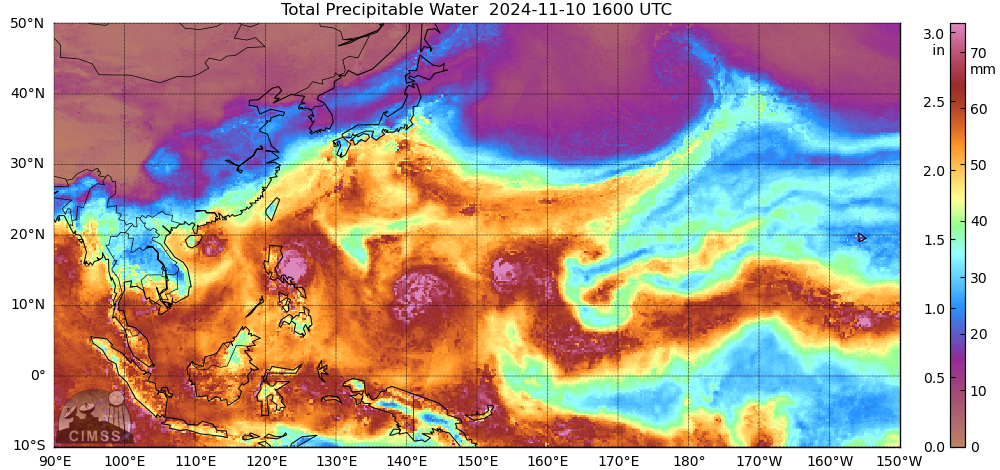Parade of tropical cyclones across the western Pacific

Total Precipitable Water fields over the western Pacific on 10/11 November 2024, above, show 4 tropical cyclones at different stages of development across the West Pacific. The screenshot from the Joint Typhoon Warning Center, below, shows the 4 storms: Yinxing, about to make landfall in Vietnam, Toraji pulling away from... Read More





